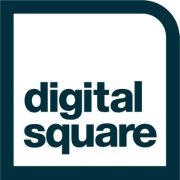What are Global Goods: Difference between revisions
| Line 6: | Line 6: | ||
There are three types of global goods: | There are three types of global goods: | ||
*'''Software''' A software tool that is frequently<sup>+</sup> open source, and used to manage, analyze, or transmit health-related data, with proven utility in several settings. | *'''Software''' A software tool that is frequently<sup>+</sup> free and open source (FOSS), and used to manage, analyze, or transmit health-related data, with proven utility in several settings. | ||
*'''Services''' A software tool that is used to manage, transmit, or analyze health-related data that can be freely accessed as a software service and adheres to open data principles. | *'''Services''' A software tool that is used to manage, transmit, or analyze health-related data that can be freely accessed as a software service and adheres to open data principles. | ||
Revision as of 19:12, 11 December 2019
What is a Global Good?
Global Goods are digital health tools that are adaptable to different countries and contexts.
There are three types of global goods:
- Software A software tool that is frequently+ free and open source (FOSS), and used to manage, analyze, or transmit health-related data, with proven utility in several settings.
- Services A software tool that is used to manage, transmit, or analyze health-related data that can be freely accessed as a software service and adheres to open data principles.
- Content A resource, toolkit, or data standard that is available under an open license and that is used to improve or analyze health data management processes.
A mature digital health software global good is software that is (usually) Free and Open Source Software (FOSS), is supported by a strong community, has a clear governance structure, is funded by multiple sources, has been deployed at significant scale, is used across multiple countries, has demonstrated effectiveness, is designed to be interoperable, and is an emergent standard application.
+ Digital Square will be further refining this definition based on the forthcoming WHO Global Access policy for digital health tools.
Digital Square supports investments into various global goods solutions.
The Need For Global Goods
| The tremendous value and corresponding excitement that digital health provides has come at a cost, as the proliferation of interest and the variety of stakeholders involved has created a fragmented approach to the use of digital tools for health in many countries. In fact, in 2012, Uganda issued a temporary moratorium on digital health pilots because its health system became overrun with them (Green, 2016). Aid programs, nongovernmental organizations, and private companies often create individual, disease-focused tools that fail to be interoperable with one another and are duplicative to in-country systems. Therefore, despite the large investment in digital health applications, these parallel structures often lead to inefficiencies because they cannot be used for other diseases or health priorities. Multiple donors and organizations may be funding and operating multiple surveillance systems for different diseases in the same country, instead of aligning themselves into one interoperable system, integrated with existing national health system infrastructure. The benefit of digital health applications notwithstanding, there is a clear need for a paradigm shift in digital health infrastructure investments. The global health community and U.S. global health programs need to move away from the current practice of single application solutions to a more strategic approach that acts holistically with both current country priorities and long term goals (Mehl and Labrique, 2014). By better coordinating the development of digital health applications, stakeholders involved in digital health can reduce duplication and ensure that the platforms are more aligned with those priorities and goals. |
| Digital health is still in its infancy. Many pilots are not followed by full-scale implementation due to a lack of sustainable nancing, high risks for individual stakeholders and long time-to-market for commercial solutions.
Greater and more stable government investment in digital health â as opposed to cyclical/individual initiatives â can help drive scale in developing countries, as venture-capital activity is limited and private sector healthcare provision is at a low scale. Digital health stakeholders need to stimulate government investment by demonstrating how digital health solutions help address national healthcare issues of poor access, quality and cost inefficiencies. Ministries of health also need to encourage and support the implementation of national digital health plans aligned with ICT and broadband agendas. |
| Replacing paper-based patient registers with electronic registers should help improve local health care quality and inform management decision making. Similarly, increasing the use of e-health and m-health approaches and tools can support improved decision making by frontline providers, including GPS-enabled tools and harnessing the revolution that smartphone access to broadband content will bring about in developing countries. In this regard, more emphasis is needed to expand and improve the use and functionality of open-source software platforms (for example, OpenMRS, OpenLMIS, and iHRIS); develop new open-source platforms (for example, for health insurance and training); and support opensource frameworks (for example, OpenHIE). |
Maturity Model
To help identify areas of investments for global goods, Digital Square is developing a Global Good Maturity Model for digital health tools. We have engaged the digital health community, in particular the Digital Health and Interoperability Working Group of the Health Data Collaborative, in the development of this model.
Currently, the maturity model is in version 1.1 form and a release candidate was presented at the Global Digital Health Forum in December of 2017.
